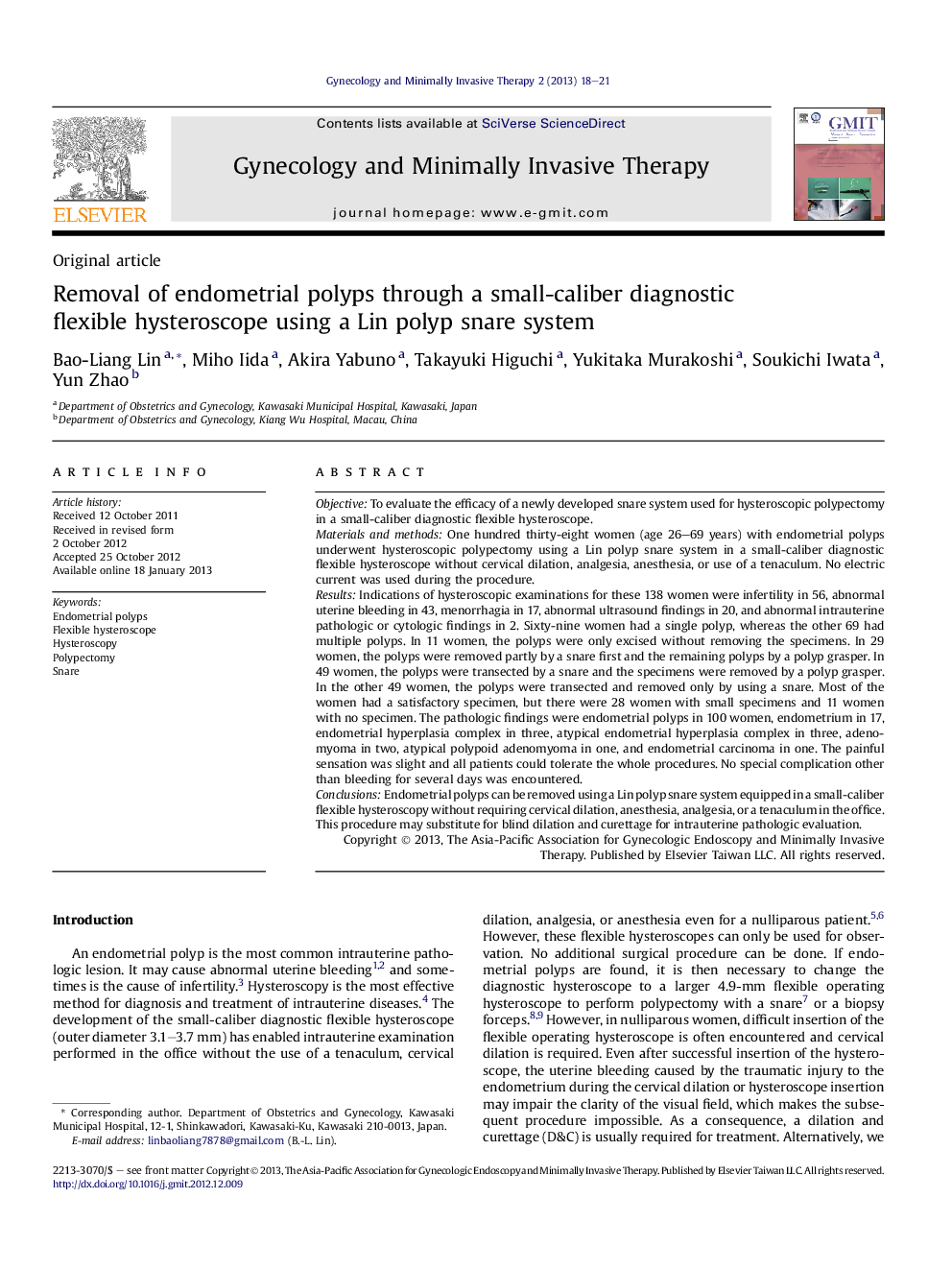| Article ID | Journal | Published Year | Pages | File Type |
|---|---|---|---|---|
| 3948298 | Gynecology and Minimally Invasive Therapy | 2013 | 4 Pages |
ObjectiveTo evaluate the efficacy of a newly developed snare system used for hysteroscopic polypectomy in a small-caliber diagnostic flexible hysteroscope.Materials and methodsOne hundred thirty-eight women (age 26–69 years) with endometrial polyps underwent hysteroscopic polypectomy using a Lin polyp snare system in a small-caliber diagnostic flexible hysteroscope without cervical dilation, analgesia, anesthesia, or use of a tenaculum. No electric current was used during the procedure.ResultsIndications of hysteroscopic examinations for these 138 women were infertility in 56, abnormal uterine bleeding in 43, menorrhagia in 17, abnormal ultrasound findings in 20, and abnormal intrauterine pathologic or cytologic findings in 2. Sixty-nine women had a single polyp, whereas the other 69 had multiple polyps. In 11 women, the polyps were only excised without removing the specimens. In 29 women, the polyps were removed partly by a snare first and the remaining polyps by a polyp grasper. In 49 women, the polyps were transected by a snare and the specimens were removed by a polyp grasper. In the other 49 women, the polyps were transected and removed only by using a snare. Most of the women had a satisfactory specimen, but there were 28 women with small specimens and 11 women with no specimen. The pathologic findings were endometrial polyps in 100 women, endometrium in 17, endometrial hyperplasia complex in three, atypical endometrial hyperplasia complex in three, adenomyoma in two, atypical polypoid adenomyoma in one, and endometrial carcinoma in one. The painful sensation was slight and all patients could tolerate the whole procedures. No special complication other than bleeding for several days was encountered.ConclusionsEndometrial polyps can be removed using a Lin polyp snare system equipped in a small-caliber flexible hysteroscopy without requiring cervical dilation, anesthesia, analgesia, or a tenaculum in the office. This procedure may substitute for blind dilation and curettage for intrauterine pathologic evaluation.
